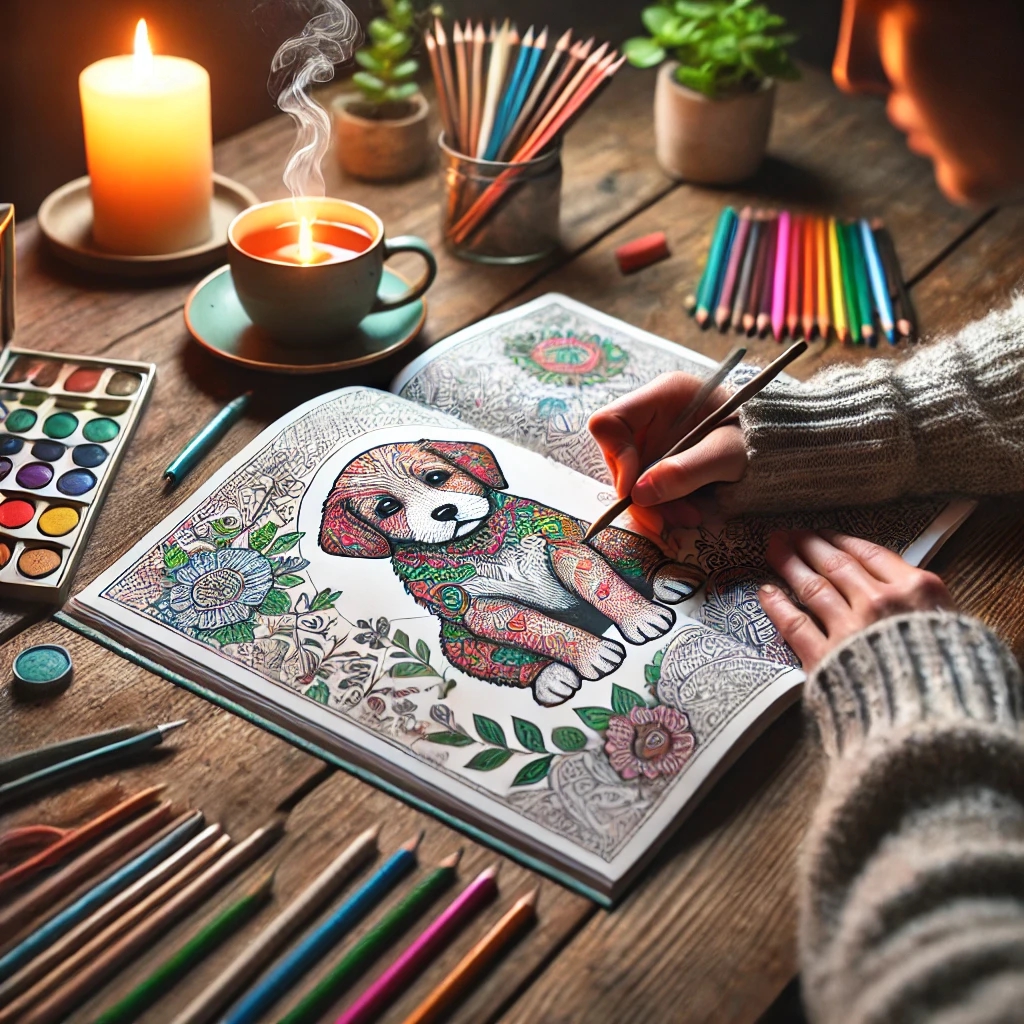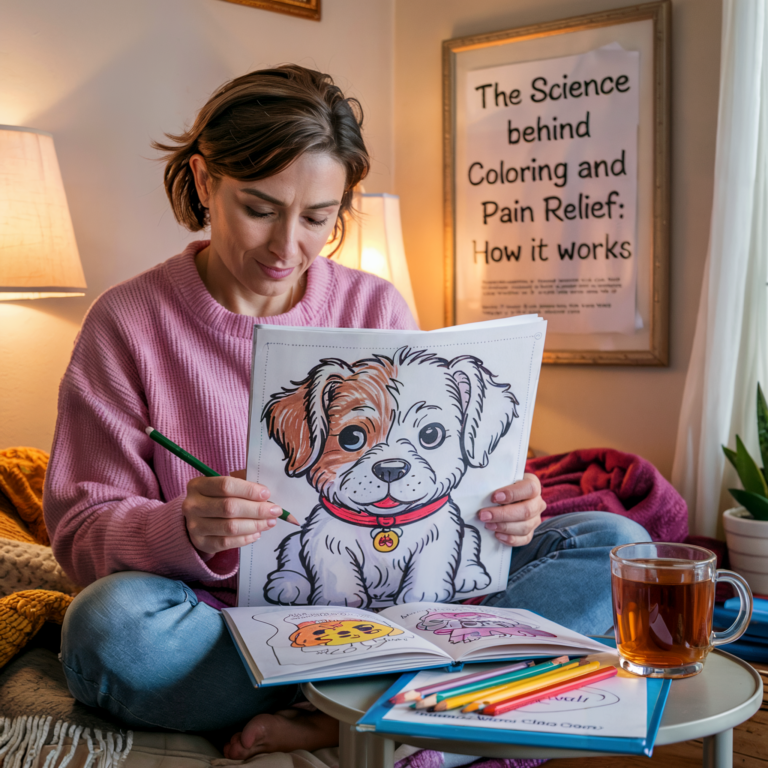Discover How Coloring Can Reduce Stress, Lift Your Mood, and Boost Mental Clarity
Can something as simple as coloring improve your emotional well-being? Science says yes.
In recent years, researchers have uncovered astonishing effects of coloring on emotional health. This once-childhood activity has become a proven tool for stress relief, relaxation, and mindfulness.
If you’ve ever felt overwhelmed, anxious, or mentally drained, picking up a coloring book might be the unexpected therapy you need. In this post, we’ll explore the science behind coloring and why it benefits your emotions.
The Brain-Boosting Science Behind Coloring
What Happens in Your Brain When You Color?
Engaging in a coloring session isn’t just fun—it activates specific areas of the brain that promote relaxation and focus.
Here’s how it works:
- Reduces the Amygdala’s Activity – The amygdala controls fear and stress responses. Coloring helps reduce its activity, leading to a calmer mind.
- Engages the Prefrontal Cortex – This part of the brain handles decision-making and problem-solving. Coloring strengthens these cognitive functions.
- Triggers the Brain’s Reward System – Completing a design boosts dopamine levels, which enhances mood and motivation.
- Promotes the “Flow” State – Coloring encourages full focus, similar to meditation, allowing the brain to shut out distractions and negative thoughts.
Why Coloring Feels Like Meditation
Mindfulness practices, like meditation and deep breathing, help people become more present and less reactive to stress. Coloring works in the same way.
Dr. Stan Rodski, a neuroscientist, found that coloring slows heart rate, lowers stress levels, and induces a relaxed state of mind.
The best part? Unlike traditional meditation, coloring doesn’t require effort or discipline. It’s an easy, enjoyable way to practice mindfulness.
The Astonishing Benefits of Coloring for Emotional Well-Being
1. Reduces Anxiety and Stress
Coloring is a powerful stress reliever. The rhythmic, repetitive motion helps calm the nervous system and shift the mind away from anxious thoughts.
A 2016 study in Art Therapy: Journal of the American Art Therapy Association found that coloring mandalas and intricate patterns significantly reduces anxiety levels.
2. Elevates Mood and Enhances Positivity
Filling in a blank page with colors activates the brain’s reward system. This triggers the release of dopamine, the “happiness” chemical.
Coloring has been shown to lift mood, reduce symptoms of depression, and create a sense of accomplishment.
3. Encourages Self-Expression Without Judgment
Not everyone finds it easy to talk about emotions. Coloring offers a non-verbal way to express feelings without pressure.
Choosing colors, blending shades, and filling in designs can help process emotions gently, healingly.
4. Improves Focus and Mental Clarity
Coloring can help improve focus and clear mental fog when your mind feels cluttered.
The structured nature of coloring keeps the brain engaged and enhances concentration, making it a great activity before work or study sessions.
5. Provides a Screen-Free Escape for Relaxation
In today’s digital world, we’re constantly surrounded by screens. Coloring offers a break from technology and a chance to unwind.
Taking time away from screens reduces eye strain, improves sleep, and promotes relaxation.
How to Get Started with Coloring for Emotional Well-Being
1. Choose the Right Coloring Book
Selecting the right book can enhance your relaxation and mindfulness experience. Consider:
✔️ Mandalas and Geometric Patterns – These promote a meditative state.
✔️ Nature and Animals – Images of forests, oceans, or puppies encourage feelings of calm and joy.
✔️ Abstract or Freeform Designs – Perfect for unleashing creativity and experimenting with colors.
At MaxwellPawsworth.com, you’ll find beautifully designed coloring books for relaxation and emotional well-being.
2. Gather Your Coloring Tools
Different coloring tools can create different effects. Try:
✔️ Colored Pencils – Great for blending and shading.
✔️ Markers – Provide bold, vibrant colors.
✔️ Gel Pens – Ideal for adding fine details and metallic accents.
3. Set Aside Time to Color Daily
Even 10-15 minutes a day can significantly affect stress levels. Try:
- Coloring in the morning to start the day with a calm focus.
- Taking a coloring break during stressful moments.
- Unwinding before bed instead of scrolling on your phone.
4. Let Go of Perfection and Enjoy the Process
Coloring isn’t about creating a perfect masterpiece. The goal is to relax, enjoy, and let your mind wander.
There’s no right or wrong way—just let the colors flow.
Why Coloring Is More Than Just a Trend
With proven benefits for emotional well-being, stress relief, and creativity, adult coloring has moved beyond being a passing trend.
More therapists, educators, and mental health professionals are integrating coloring into wellness programs. Its ability to promote mindfulness and relaxation makes it a valuable tool for anyone looking to improve their mental health.
Whether you want to reduce stress, enhance mood, or take a break, coloring is a simple, effective, and enjoyable solution.
Final Thoughts
Adult coloring might be the answer if you’re searching for a way to relax, focus, and feel happier.
Experience the astonishing effects of coloring on emotional well-being with beautifully designed coloring books from MaxwellPawsworth.com.
Your journey to relaxation starts with just one page.
Explore the complete Maxwell Pawsworth coloring book collection HERE!







